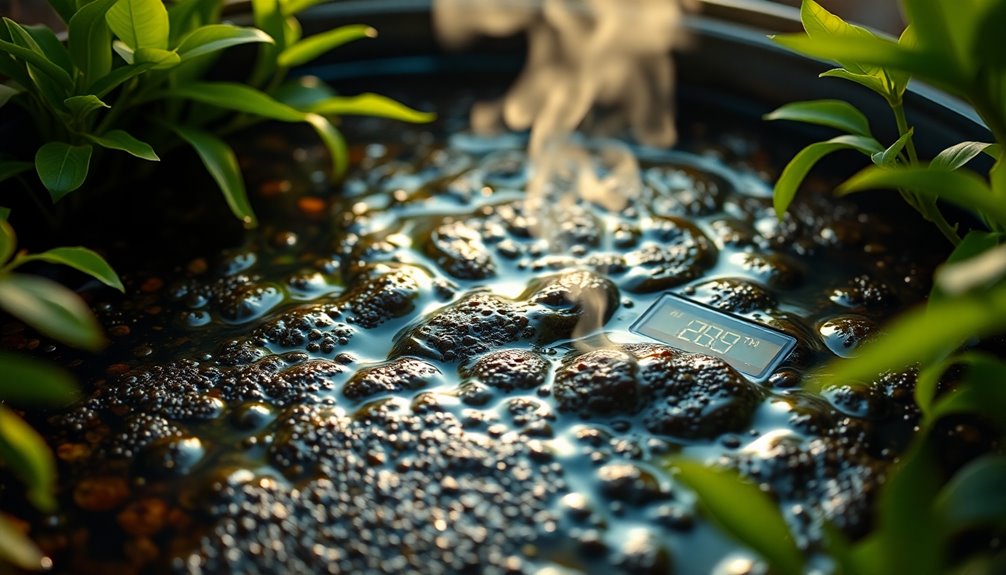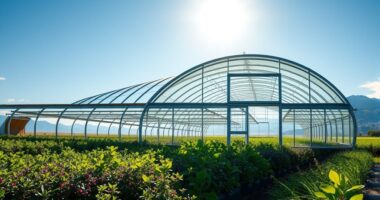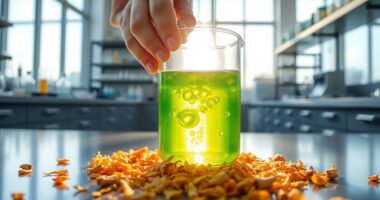Semi-thermophilic anaerobic digestion, operating between 41°C and 49°C, offers impressive boosts in methane output and process stability. This temperature range enhances microbial diversity, leading to higher methane yields while maintaining efficient energy recovery. You'll find that monitoring parameters like pH and volatile fatty acids is crucial for optimal performance. By managing organic loading rates and hydraulic retention times, you can maximize efficiency. There's much more to explore about its benefits and applications in waste management.
Key Takeaways
- Semi-thermophilic digestion enhances methane production through a diverse microbial community, improving overall process performance.
- Co-digestion with various substrates optimizes methane yield and enhances efficiency in semi-thermophilic systems.
- Shorter hydraulic retention time (HRT) in semi-thermophilic digestion accelerates the digestion process compared to mesophilic alternatives.
- Regular monitoring of pH and volatile fatty acids (VFA) is crucial for maintaining stability and maximizing methane output.
- While semi-thermophilic systems are energy-efficient, they may be less effective in pathogen removal compared to thermophilic systems.

When exploring efficient waste management solutions, you might consider semi-thermophilic anaerobic digestion as a compelling option. This process operates within a temperature range of 41°C to 49°C, striking a balance that's slightly warmer than mesophilic conditions but cooler than thermophilic ones. This unique temperature range can offer better stability and efficiency compared to full thermophilic processes, making it an attractive choice for optimizing waste management.
One of the key advantages of semi-thermophilic digestion is its ability to support a broader microbial community. This diversity can play a crucial role in enhancing methane production, especially when you implement co-digestion strategies with various substrates. By carefully managing parameters like organic loading rate (OLR) and hydraulic retention time (HRT), you can maximize methane output while ensuring process stability. Additionally, thermophilic microorganisms are explored for their potential to improve biomethane production even within semi-thermophilic conditions.
Semi-thermophilic digestion fosters microbial diversity, enhancing methane production through strategic co-digestion and careful parameter management.
For instance, a shorter HRT often leads to quicker digestion, while a well-monitored pH and ammonia levels can maintain optimal conditions.
While semi-thermophilic systems excel in methane yield and energy recovery efficiency, they do have some limitations. They mightn't be as effective in pathogen removal as thermophilic systems. However, the reduced energy demand for heating makes semi-thermophilic digestion more energy-efficient, which is a significant benefit in today's sustainability-focused landscape.
Another critical factor to consider is the volatile solids (VS) reduction. Semi-thermophilic conditions can achieve substantial VS reduction, contributing to the overall quality of the digestate.
Regular monitoring of volatile fatty acids (VFA) accumulation and microbial community dynamics is essential for maintaining stability in the process.
Frequently Asked Questions
What Types of Substrates Are Best for Semi-Thermophilic Anaerobic Digestion?
For semi-thermophilic anaerobic digestion, you'll want to focus on high energy-density substrates like lipid-rich materials and easily biodegradable carbohydrates.
Lignocellulosic substrates can be effective after pretreatment, while the organic fractions of municipal solid waste (OFMSW) and agricultural waste like crop residues also work well.
Ensure a balanced carbon-to-nitrogen ratio and optimal moisture content to maximize methane production and maintain process stability.
How Does Temperature Affect Microbial Community Composition?
Temperature affects microbial community composition like a conductor guiding an orchestra; each shift changes the harmony.
When temperatures rise or fall, you'll notice shifts in microbial abundance and interactions. Some species thrive in warmth, while others prefer cooler conditions.
These changes can influence growth rates and diversity, ultimately impacting ecosystem processes.
You'll find that even small temperature fluctuations can significantly alter the structure and function of microbial communities.
What Are the Economic Benefits of Semi-Thermophilic Anaerobic Digestion?
The economic benefits of semi-thermophilic anaerobic digestion are significant.
You'll see reduced energy costs since it generates energy on-site, decreasing reliance on utilities. Increased methane yields mean more energy from organic material.
Plus, you can diversify energy use with biogas for electricity or fuel. This process creates revenue streams through tipping fees and fertilizer sales, while also fostering local job growth and economic stability, leading to greater self-sufficiency in energy production.
How Can Process Stability Be Monitored Effectively?
To monitor process stability effectively, you should focus on key parameters like pH, alkalinity, and volatile fatty acids (VFA).
Real-time monitoring allows you to detect changes early, preventing upsets. Keep an eye on the VFA:ALK ratio, as it's a strong predictor of stability.
Utilizing online instrumentation can provide continuous data, while gas chromatography can analyze biogas composition.
Are There Specific Inhibitors to Watch for in This Process?
Imagine your anaerobic digester as a finely tuned orchestra, where specific inhibitors can hit a sour note.
You need to keep an eye out for volatile fatty acids, ammonia, salinity, and hydrogen sulfide, as they can disrupt microbial harmony and lower methane production.
Conclusion
In the world of anaerobic digestion, semi-thermophilic conditions are like a warm embrace, nurturing the microbial community and igniting a fiery surge in methane production. By operating between 41 and 49°C, you're not just optimizing outputs; you're crafting a symphony of stability and efficiency. As the temperature rises, so does the potential for innovation, turning organic waste into a treasure trove of energy. Embrace this transformative process, and watch as your efforts bloom into a greener future.









